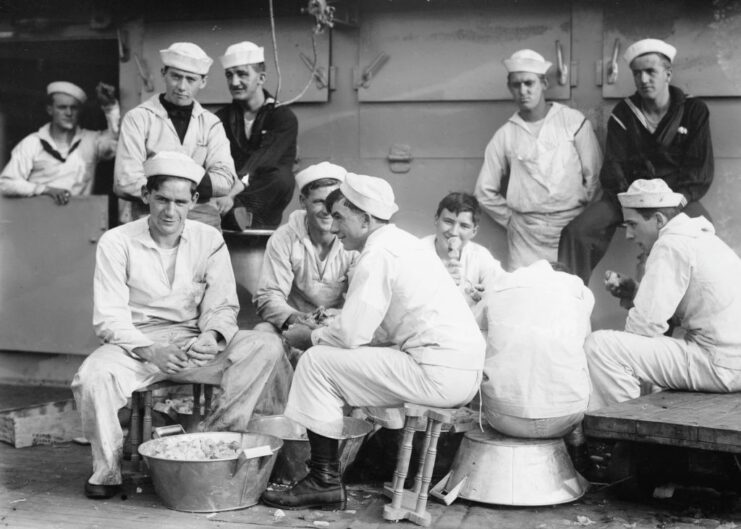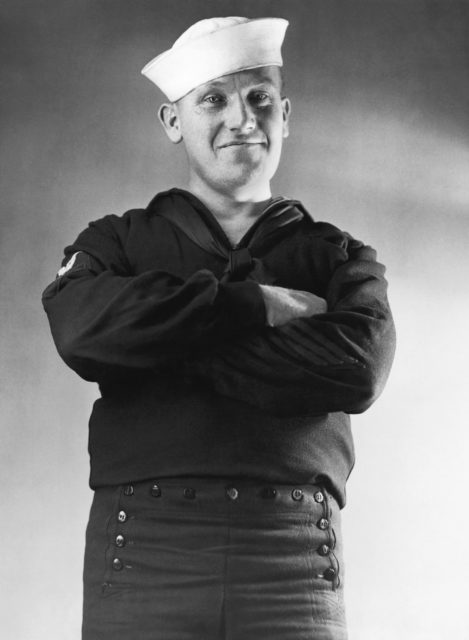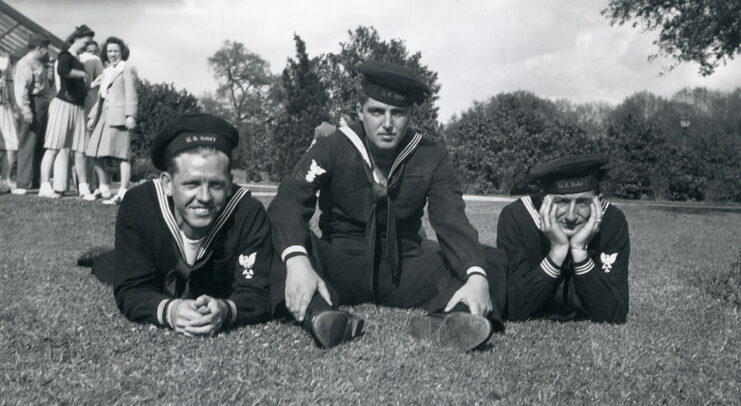Navies across the world have traditions, some dating back hundreds of years. Many are so old that their origins have long since been forgotten. However, one tradition, in particular, has a well-known explanation: the 13-button pants worn by sailors in the US Navy. While the primary reason is practical, theories abound as to their secondary purpose.
‘Crackerjacks’

These 13-button bellbottom pants, nicknamed “Crackerjacks,” were introduced by the US Navy in the early 1800s, and they were designed for practicality. The flared ends were better suited for rolling up during laborious tasks, a much-appreciated tiny luxury, and, should a sailor fall overboard, they allowed for easier removal, without the need to take off any footwear. The thick wool they were made from would become heavy when soaked, so this prevented the men from sinking beneath the water’s surface.
There are also some additional theories regarding the 13-button pants, with some suggesting the flared bottoms were simply implemented to give US Navy sailors a unique appearance. Outside of that, zippers weren’t commonplace at the time, so the buttons kept the crotch area, known as the “broadfall,” in place.
Why do the pants worn by US Navy sailors have 13 buttons?

As aforementioned, the broadfall section of the pants is held in place by exactly 13 buttons, and many assume that the implements were designed by the US Navy to represent America’s original 13 colonies. However, this is considered more of a sailor’s tale.
The broadfall originally had 15 buttons, but this was reduced to seven to save material. However, the sailors soon complained the section was too small. This was partly because diet changes led to weight gain, with others complaining about how uncomfortable it made their “equipment” feel.
The US Navy listened and made the broadfall bigger. With more material came the need for more buttons, resulting in six more being added, bringing the total to the 13 we see today. This number was likely chosen to maintain visual symmetry.
What about other pieces of uniform?

Other pieces of the US uniform had their uses, too. The neckerchief could be used as a headband or a cleaning cloth, and it also kept uniforms clean. Sailors in the 19th century typically sported long hair and, to keep it out of their way during tasks, it would be tied in a ponytail and stuck down with a sticky tar-like substance. The neckerchief kept it off the rest of their uniform.
Like the “13 buttons, 13 colonies” explanation for the bellbottom pants, the neckerchief also has an alternative and unlikely origin. Allegedly, the fabric is a symbol to honor Horatio Nelson, with the three white lines representing his three major victories.
More from us: Battle of Trafalgar: The Engagement That Saw the Heroic Death of Vice Adm. Horatio Nelson
Today, this style of uniform is for dress purposes, rather than actual work, and these unique features were retained to maintain traditions.
